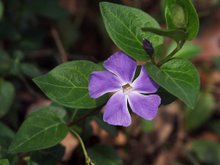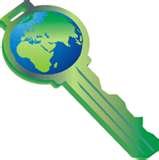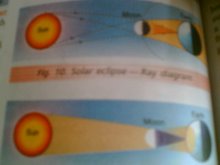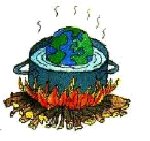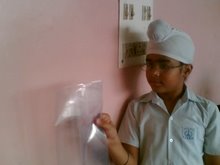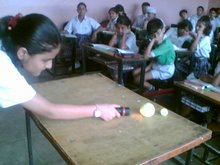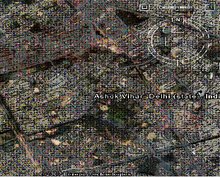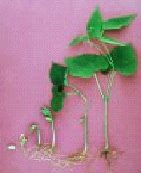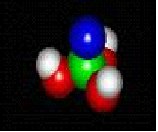
Friday, 25 May 2007
Wednesday, 23 May 2007
Tuesday, 22 May 2007
Monday, 21 May 2007
Cell Structures
Across
4. Proteins are produced here.
5. A jellylike fluid within cells.
7. This rigid covering is not found in animal cells.
8. Act as storage sacks within cells.
Down
1. Transports materials within the cell.
2. These structures produce energy for the cell.
3. The cell's control center.
6. In plant cells, these structures contain chlorophyll.
Across
4. Proteins are produced here.
5. A jellylike fluid within cells.
7. This rigid covering is not found in animal cells.
8. Act as storage sacks within cells.
Down
1. Transports materials within the cell.
2. These structures produce energy for the cell.
3. The cell's control center.
6. In plant cells, these structures contain chlorophyll.
Sunday, 20 May 2007
Energy Sources
Across
1. This process is used in nuclear power plants.
3. This process is how the sun produces energy.
4. This type of power plant produces energy by harnessing moving water.
5. Resources that do not run out are called...
Down
1. Coal, oil and natural gas are examples of...
2. A device that can convert sunlight directly to electricity.
6. Windmills produce energy by harnessing...
Across
1. This process is used in nuclear power plants.
3. This process is how the sun produces energy.
4. This type of power plant produces energy by harnessing moving water.
5. Resources that do not run out are called...
Down
1. Coal, oil and natural gas are examples of...
2. A device that can convert sunlight directly to electricity.
6. Windmills produce energy by harnessing...
Scientific Facts on Ecosystem Change
Dear friends
Human well-being is highly dependent on ecosystems and the benefits they provide such as food and drinkable water. Over the past 50 years, however, humans have had a tremendous impact on their environment.
To better understand the consequences of current changes to ecosystems and to evaluate scenarios for the future, UN Secretary General Kofi Annan has launched a comprehensive scientific study, the Millennium Ecosystem Assessment.
What actions could be taken to limit harmful consequences of ecosystem degradation?
Scientific Consensus
Four main findings on the links between ecosystems and human well-being: More...
10.1 Over the past 50 years, humans have changed ecosystems faster and more extensively than in any period in human history. This has been due largely to rapidly growing demands for food, freshwater, timber, fiber, and fuel. The result has been a substantial and largely irreversible loss in the diversity of life on Earth. More...
10.2 The changes made to ecosystems have contributed to substantial gains in human well-being and economic development, but these gains have been achieved at growing costs. These costs include the degradation of many ecosystem services, increased risks of abrupt changes, and increased poverty for some groups of people. These problems, unless addressed, will substantially reduce the benefits that future generations get from ecosystems. More...
10.3 This degradation of ecosystem services could get significantly worse during the next 50 years. It is a barrier to the achievement of the Millennium Development Goals. More...
10.4 Reversing the degradation of ecosystems while meeting increasing demands for their services is a challenge. This challenge can be partially met in the future under scenarios involving significant changes to policies, institutions, and practices. However, these required actions will have to be substantial when compared to the actions currently taken. More...
Human well-being is highly dependent on ecosystems and the benefits they provide such as food and drinkable water. Over the past 50 years, however, humans have had a tremendous impact on their environment.
To better understand the consequences of current changes to ecosystems and to evaluate scenarios for the future, UN Secretary General Kofi Annan has launched a comprehensive scientific study, the Millennium Ecosystem Assessment.
What actions could be taken to limit harmful consequences of ecosystem degradation?
Scientific Consensus
Four main findings on the links between ecosystems and human well-being: More...
10.1 Over the past 50 years, humans have changed ecosystems faster and more extensively than in any period in human history. This has been due largely to rapidly growing demands for food, freshwater, timber, fiber, and fuel. The result has been a substantial and largely irreversible loss in the diversity of life on Earth. More...
10.2 The changes made to ecosystems have contributed to substantial gains in human well-being and economic development, but these gains have been achieved at growing costs. These costs include the degradation of many ecosystem services, increased risks of abrupt changes, and increased poverty for some groups of people. These problems, unless addressed, will substantially reduce the benefits that future generations get from ecosystems. More...
10.3 This degradation of ecosystem services could get significantly worse during the next 50 years. It is a barrier to the achievement of the Millennium Development Goals. More...
10.4 Reversing the degradation of ecosystems while meeting increasing demands for their services is a challenge. This challenge can be partially met in the future under scenarios involving significant changes to policies, institutions, and practices. However, these required actions will have to be substantial when compared to the actions currently taken. More...
Doctors who are sure to help mother Earth recover fast from her illness
Mother earth is sick? Don't worry.
Earth scientists are the doctors who are sure to help mother Earth recover fast from her illness.
Your body has natural resources also
HEART - pumps blood carrying oxygen and nutrients through your body
LUNGS - to breathe in fresh air and breathe out stale air
LIVER AND KIDNEYS -to clean away toxins
All parts of your body work together
to keep you alive and healthy.
What happens if you get an infection in the
natural resources of your body?
You get sick and don't feel well.
The infection is toxic pollution
It harms your natural resources.
It harms your body's environment.
Then you need a special investigator to find out what is making you sick and to help you get well.
Your body's special investigator is your doctor.
The doctor can tell you what medicine to take to get rid of the toxic infection, so your body can get healthy again.
Earth's natural resources need to stay healthy too!
WATER
To clean the atmosphere and the environment,
and to nourish plants and animals
SOIL
To filter the water, provide nourishment for plants and some animals,
and recycle material to be used again
PLANTS AND TREES
To absorb carbon from the atmosphere and release oxygen.
To supply food and medicine, and provide shelter for plants and animals
ATMOSPHERE
Air surrounding the planet containing
nitrogen, oxygen, water vapor, other gases, and many tiny particles
To protect life on the planet, shielding it from harmful radiation from the sun.
To provide a blanket of warmth around the planet
The atmosphere is being damaged by carbon dioxide overload,
so more harmful radiation is reaching us on Earth -
and the blanket of warmth is getting warmer!
What happens when pollution gets in Earth's natural resources?
They become impure and poisonous,
and then plants and animals get sick.
Toxics and pollution harm the Earth's environments,
just like they harm our bodies.
The Earth's doctors are the Earth Scientists.
They investigated the environments' illnesses
and said:
POLLUTION OF AIR, WATERS AND SOIL
CLEAR-CUTTING FORESTS
DUMPING TOXIC WASTE
CUTTING OLD-GROWTH TREES
HARMFUL FISHING METHODS
DEPLETING AND WASTING NATURAL RESOURCES
DESTRUCTION OF OZONE LAYER
DESTRUCTION OF BIOLOGICAL DIVERSITY
EXTINCTION OF SPECIES
REMEMBER TO
REDUCE - REUSE - RECYCLE
AND SAVE ENERGY
Earth scientists are the doctors who are sure to help mother Earth recover fast from her illness.
Your body has natural resources also
HEART - pumps blood carrying oxygen and nutrients through your body
LUNGS - to breathe in fresh air and breathe out stale air
LIVER AND KIDNEYS -to clean away toxins
All parts of your body work together
to keep you alive and healthy.
What happens if you get an infection in the
natural resources of your body?
You get sick and don't feel well.
The infection is toxic pollution
It harms your natural resources.
It harms your body's environment.
Then you need a special investigator to find out what is making you sick and to help you get well.
Your body's special investigator is your doctor.
The doctor can tell you what medicine to take to get rid of the toxic infection, so your body can get healthy again.
Earth's natural resources need to stay healthy too!
WATER
To clean the atmosphere and the environment,
and to nourish plants and animals
SOIL
To filter the water, provide nourishment for plants and some animals,
and recycle material to be used again
PLANTS AND TREES
To absorb carbon from the atmosphere and release oxygen.
To supply food and medicine, and provide shelter for plants and animals
ATMOSPHERE
Air surrounding the planet containing
nitrogen, oxygen, water vapor, other gases, and many tiny particles
To protect life on the planet, shielding it from harmful radiation from the sun.
To provide a blanket of warmth around the planet
The atmosphere is being damaged by carbon dioxide overload,
so more harmful radiation is reaching us on Earth -
and the blanket of warmth is getting warmer!
What happens when pollution gets in Earth's natural resources?
They become impure and poisonous,
and then plants and animals get sick.
Toxics and pollution harm the Earth's environments,
just like they harm our bodies.
The Earth's doctors are the Earth Scientists.
They investigated the environments' illnesses
and said:
POLLUTION OF AIR, WATERS AND SOIL
CLEAR-CUTTING FORESTS
DUMPING TOXIC WASTE
CUTTING OLD-GROWTH TREES
HARMFUL FISHING METHODS
DEPLETING AND WASTING NATURAL RESOURCES
DESTRUCTION OF OZONE LAYER
DESTRUCTION OF BIOLOGICAL DIVERSITY
EXTINCTION OF SPECIES
REMEMBER TO
REDUCE - REUSE - RECYCLE
AND SAVE ENERGY
Subscribe to:
Comments (Atom)
































